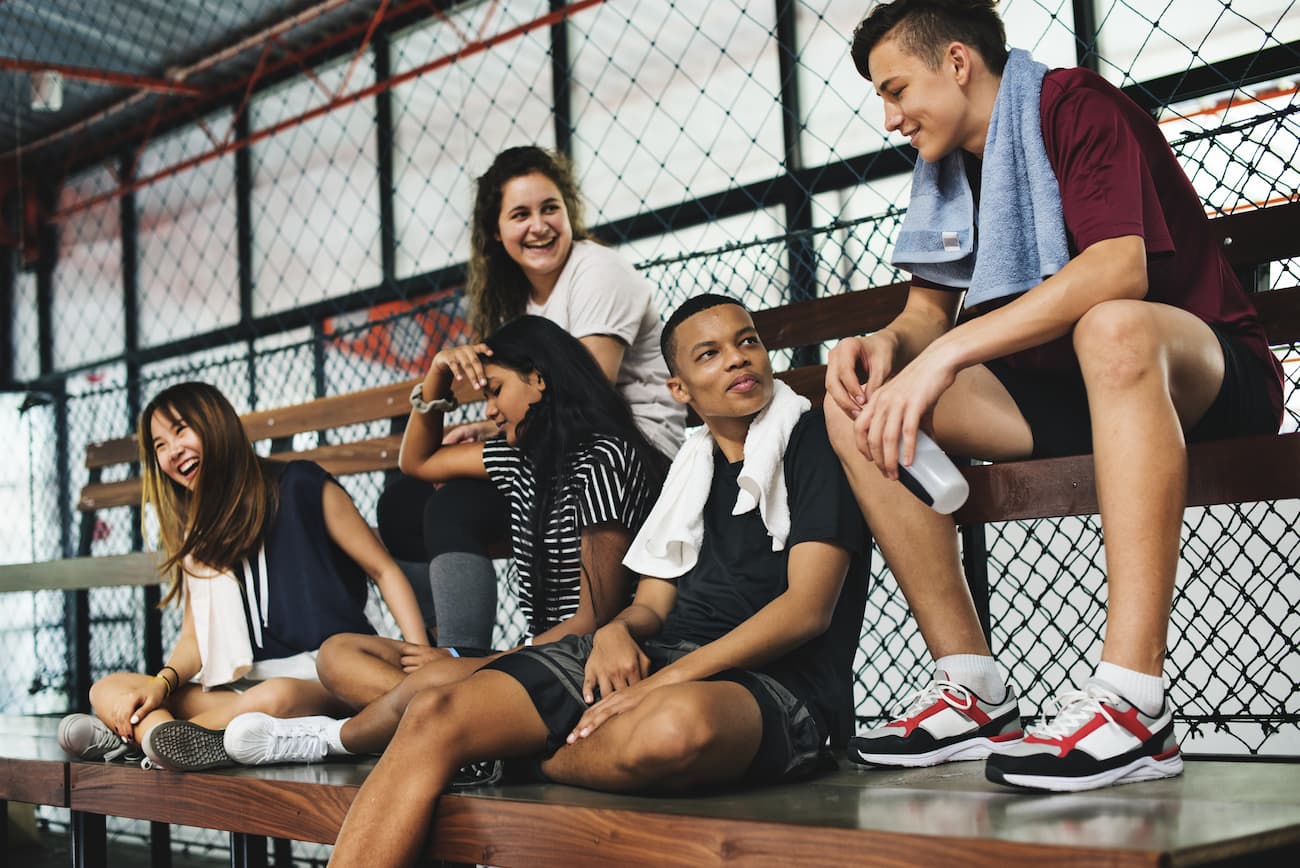The term “wellness” seems to be trending a lot these days, and is being applied in many aspects of life. One definition of wellness is a “philosophy of health as realization of full potential instead of just avoidance of illness.”
We all know that washing our hands and getting enough sleep can help keep illness at bay, but how often do we consider the impact of other everyday actions on our overall health? Bringing awareness to small changes students can make to their food choices, movement and breathing can help maintain health and overall wellness for life.
Use these three lessons to teach students about healthy habits and routines:
The B&W Box
- The Lesson: It’s easy to think you’re eating healthy when you’re not paying much attention; my clothes fit, so I’m okay! However, paying just a bit more attention to foods you consume can drastically change your energy levels, ability to focus and even physical appearance.
- In Class: Independent Activity- Ask students to list their favorite foods, the foods they eat regularly and the foods they consider healthy. Group Activity- Familiarize students with the Nutrition Facts section of their food. Spend some time online looking at the nutrition breakdowns for these foods on the company websites or through a Google search. Ask for observations, reactions, and honesty about what they learned.
- Homework: In the next three days, read the nutrition labels on your food. What protein, carbohydrate, fat and sugar percentages do you see? If you’re curious about any ingredient, make a list for us to explore in class.
- Bonus Resource*: Healthier Me Jr. (Grades 1-4); Healthier Me (Grades 6-8) – Healthier Me is an innovative, games-based digital course that gives students the tools to make healthy, informed decisions when it comes to health and nutrition. Throughout the online course, students embark on fun wellness adventures—from completing grocery shopping to creating a well-balanced cafeteria lunch—working through true-to-life scenarios to help them achieve positive wellness outcomes. 20-25 minutes.
A Drop of Sweat
- The Lesson: Exercise isn’t just good for you while you’re doing it but afterwards as well. There is a stage nicknamed “the afterburn” where even after you leave the gym or end your hike your body is working harder than it was before you exercised. Incorporating daily fitness becomes more important with each year we grow older.
- In Class: Independent Activity- Share instructions on how students can find their resting heart rate. Group Activity- Make a list of actions we take every day that elevate our heart rates and another list of fun activities that your raise heart rate
- Homework: Do 15 pushups before your morning shower tomorrow morning. How do you feel in the moment? How do you feel an hour later? Was it difficult to find the time and space to do the pushups?
- Bonus resource*: Hockey Scholar Science Lesson 4 (Grades 4-7) – In Lesson 4: Endurance, students train hockey players in their target heart rate zone during an on-ice shift to see the effect of exercise on heart rate and breathing rate. The additional offline activity has students measure their own breathing and heart rates before and after exercise.
Fill ‘er Up
- The Lesson: Life can be overstimulating and our emotions can change quickly, whether we’re having the time of our lives at an amusement park with family or getting more nervous approaching the principal’s office. When moments get overwhelming and you begin to feel anxious or angry, take a moment to focus on nothing but yourself and your breathing.
- In Class: Have students rub their hands together for 10 seconds to create friction and then place their whole hand over each eye. Now that visual stimulation has been removed, have them focus on their breath. Lead them through different breathing exercises, from visualizing blowing up a balloon to 4-7-8 breathing.
- Homework: Next time you are upset with someone or feeling worried, close your eyes and practice one of the new breathing exercises. How did you feel? Were you able to identify any emotion that surprised you? Did it help you get back to being happy faster?
- Bonus Resource*: Character Playbook Lesson 2 (Grades 7-9), Mental Wellness Basics (Grades 8-10) – In Lesson 2 of Character Playbook, students learn how to read others’ emotions and how to effectively understand, manage, and express their own emotions. Mental Wellness Basics introduces students to the experiences of others in order to develop awareness and empathy, reduce stigma, and provide facts on the prevalence and symptoms of mental health conditions.
*All of the Bonus Resources mentioned above are offered to teachers and students across North America at no cost.

Nichole Holladay supports teachers in Arizona as a Schools Implementation Manager for EVERFI. She attended Colgate University, is a former pre-k teacher and enjoys researching childhood development. In her free time, Nichole loves exploring small towns in Arizona and swimming as much as possible.

